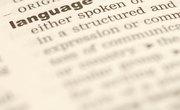"I" before "e" except after "c," but aren't there some exceptions too? The English language can be a difficult one to learn, and whether it's your first language or your fifth, its intricacies can be infuriating at times. The grammar of English can be particularly confusing, and like many things, practice is what makes the perfect English speaker. Whether you are teaching a group of English students, a second-language class or another such group, some grammar exercises can keep things moving.
Fill in the Blank
Perhaps the most practical and helpful way to practice English grammar is to see it in real life, and an easy way to do so is to use some fill-in-the-blank exercises.
Educators can create their own worksheets, can find exercises online or can even find an article or two and remove certain parts of certain sentences. No matter what, provide students with a chance to practice applying their grammar skills in these situations that mimic real-life action.
For example, subject-verb agreement is one of the hardest grammar exercises to conquer. "The boy runs to the store" is easy, but do the boy and his friends "run" or "runs?" What about "the boy or his friends?"
Fill-in-the-blanks give students a chance to analyze and apply these tricky grammar exercises and to practice with these skills.
Change the Place
To the untrained ear, the sentence "the ball was hit by the boy" may not seem incorrect. However, in the world of proper English writing and grammar, this sentence is incorrect.
Advance grammar calls for students to use "active voice" instead of "passive voice." The difference is a more direct and to-the-point style of writing; "the boy hit the ball" is the correct expression for the example.
Provide students with a number of sentences in active and passive voice. Have the students decide which ones are active, and therefore correct, and which are passive. When they find a passive sentence, students should indicate how the sentence should be rearranged to make it active. This practice will help students to focus on a generally overlooked area of grammar.
Share Your Mistakes
It may not be easy to admit, but nearly everyone who speaks English will make a grammar mistake at one time or another. Use these mistakes as teaching opportunities for your students.
Ask students to read articles, newspaper or books and find grammar mistakes there. If a student thinks he has found a mistake, bring it before the class and have everyone analyze it together. This will help students see the real-life application for some grammar techniques and help them to understand that even if they struggle, they are not the only ones.
You can also use student work to provide examples. Choose one sentence from the work of each student and place them anonymously on a worksheet. Have the students discuss the problems and find solutions for the mistakes. Students will realize that they all have the same troubles, and that they can help each other overcome the grammar obstacles.
Related Articles
References
Writer Bio
Samantha Volz has been involved in journalistic and informative writing for over eight years. She holds a bachelor's degree in English literature from Lycoming College, Williamsport, Pennsylvania, with a minor in European history. In college she was editor-in-chief of the student newspaper and completed a professional internship with the "Williamsport Sun-Gazette," serving as a full-time reporter. She resides in Horsham, Pennsylvania.










